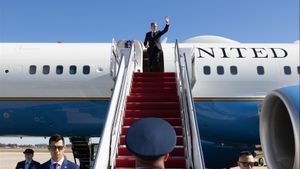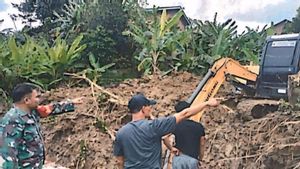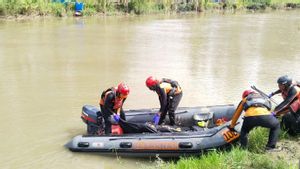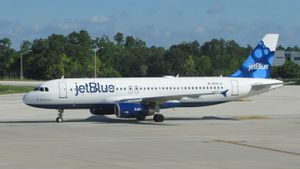JAKARTA - Turkey's first stealth attack drone successfully made its inaugural flight last month, drawing praise from President Recep Tayyip Erdogan for his ability to carry out various missions.
The debut of a new generation of air combat aircraft, named Anka-3, marks the latest significant progress in Turkey's defense capabilities, demonstrating the country's commitment to domestic technology development in combat drones.
Anka-3 reached an 8,000-foot altitude during its one hour 10-minute flight, according to pioneering defense developer and manufacturer Turkish Aerospace Industries (TAI).
Anka-3 reached a speed of 150 knots and also conducted a runway overshoot test during its inaugural flight on Thursday morning, TAI said.
This is the third member of the Anka TAI drone family, with several advantages such as low radar visibility, high speed thanks to its jet engine and large load capacity.
President Erdogan also expressed his optimism regarding the potential contribution of drones.
"Hopefully, our aircraft will make a strong contribution to our country's defense with its advanced technologies, designs and features," President Erdogan wrote on social media X, as reported by the Daily Sabah on January 10.
The Anka-3 drone is said to have the ability to carry out various missions such as reconnaissance, surveillance and intelligence, with air-ground ammunition, air-to-air ammunition and radar systems. It will be able to perform many tasks such as operations and joint communication relays with elements.
Anka-3 capacity will allow integration of various options, ranging from ammunition commonly used in current UAVs to larger ammunition such as SOM-J, MK-82 and bunker-destroying bombs.
The aircraft has an avionic architecture and a ground control station similar to Anka and Anka-2 unmanned combat aerial vehicles, which were also developed by TAI.
SEE ALSO:
Anka-3 has neither horizontal nor vertical tails, a design officials say will allow it to operate quietly without being detected. It will also showcase high-speed transfer capabilities, allowing rapid deployment to remote areas.
With a maximum takeoff weight of 6,500 kilograms (14,330.05 pounds) and a practical cargo capacity of 1,200 kilograms, Anka-3 is expected to be able to fly at service altitudes of up to 40,000 feet and be able to stay on flight for up to 10 hours at an altitude of 30,000 feet.
"We now have UAVs in the sky that the enemy cannot see, but can see the enemy," said Temel Kotil, general manager of TUSA
The English, Chinese, Japanese, Arabic, and French versions are automatically generated by the AI. So there may still be inaccuracies in translating, please always see Indonesian as our main language. (system supported by DigitalSiber.id)


















